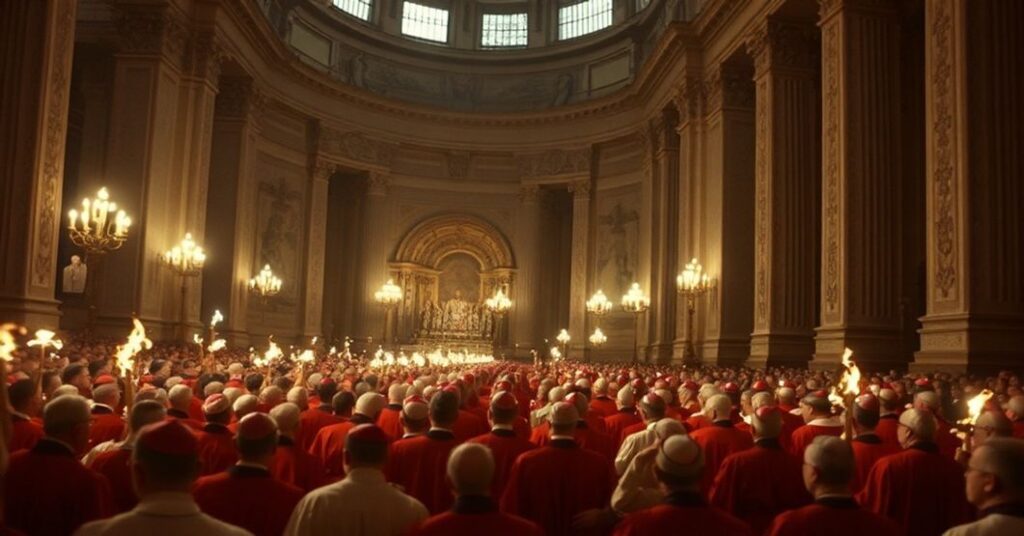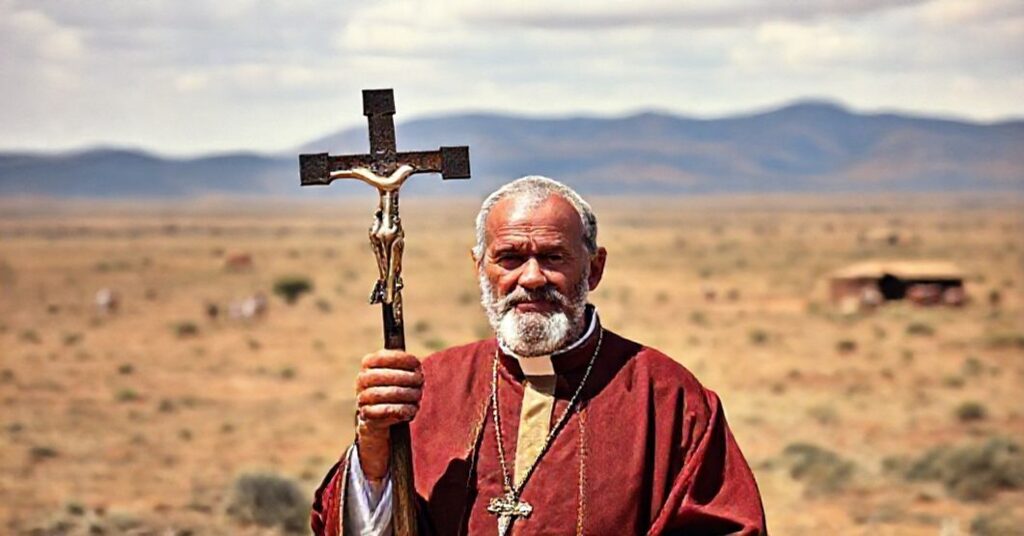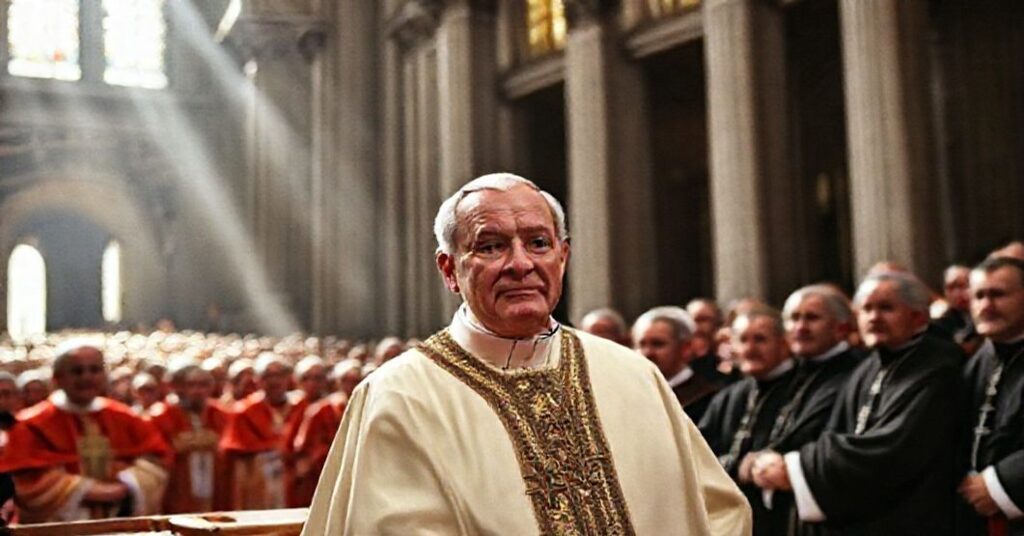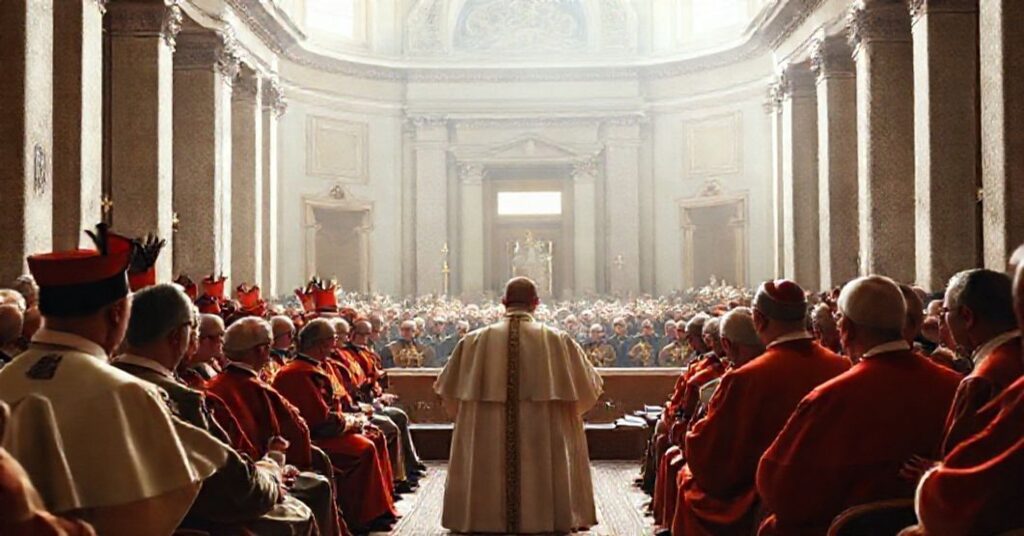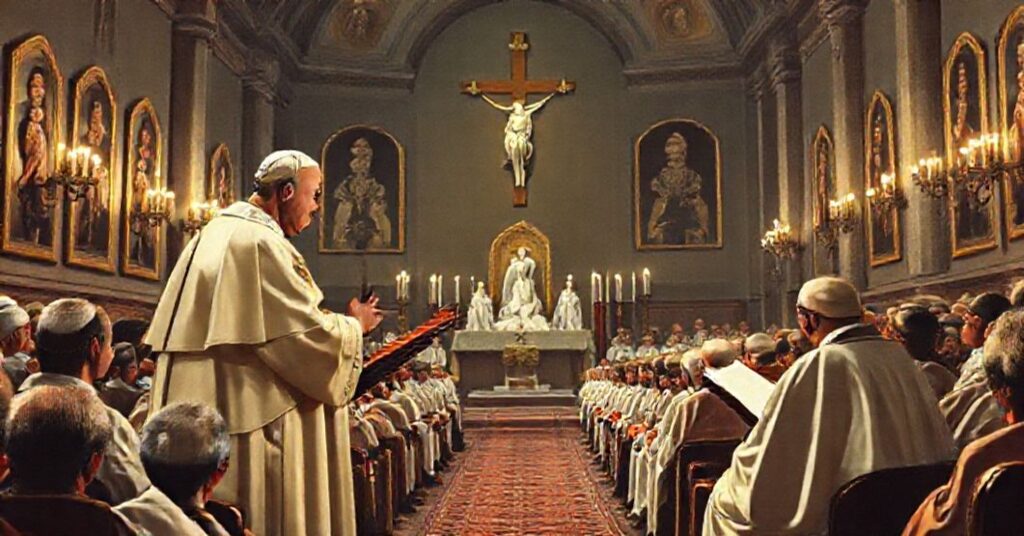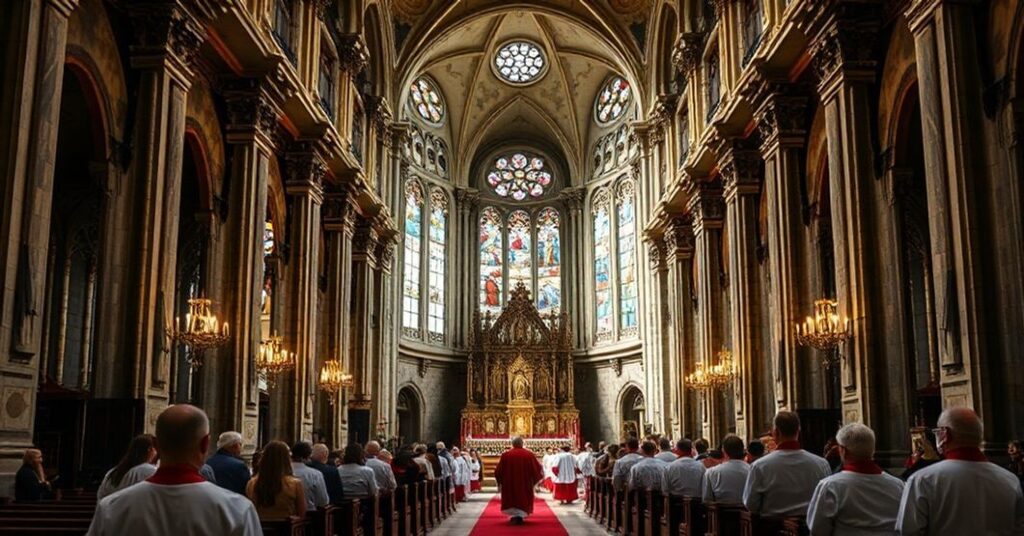Oturkpoensis (1959.04.02)
The Latin text attributed to John XXIII announces the elevation of the Apostolic Prefecture of Oturkpo in Nigeria to the rank of a diocese, maintaining its name and boundaries, placing it as suffragan to Onitsha, entrusting it to the Congregation of the Holy Spirit (Spiritans), defining the episcopal see, seminary requirements, consultors, and financial provisions, and solemnly asserting its binding force with the usual juridical formulae of perpetuity and nullity of contrary acts. This seemingly modest act of “pastoral organization” is in reality a juridical and symbolic brick in the construction of the future conciliar revolution and the occupation of Africa by the neo-church of the New Advent.


